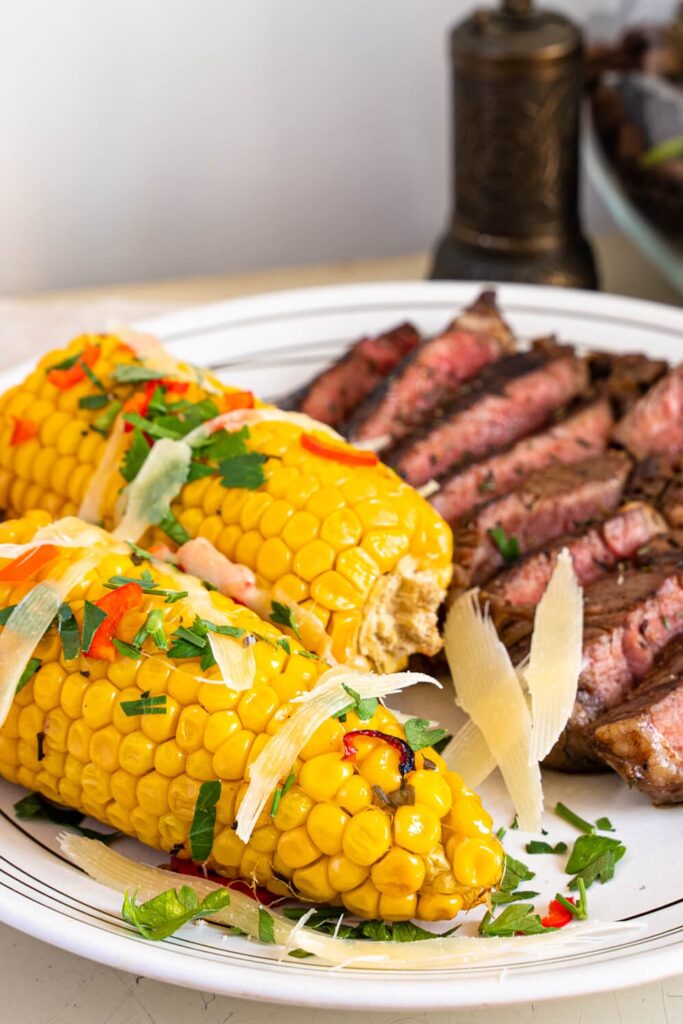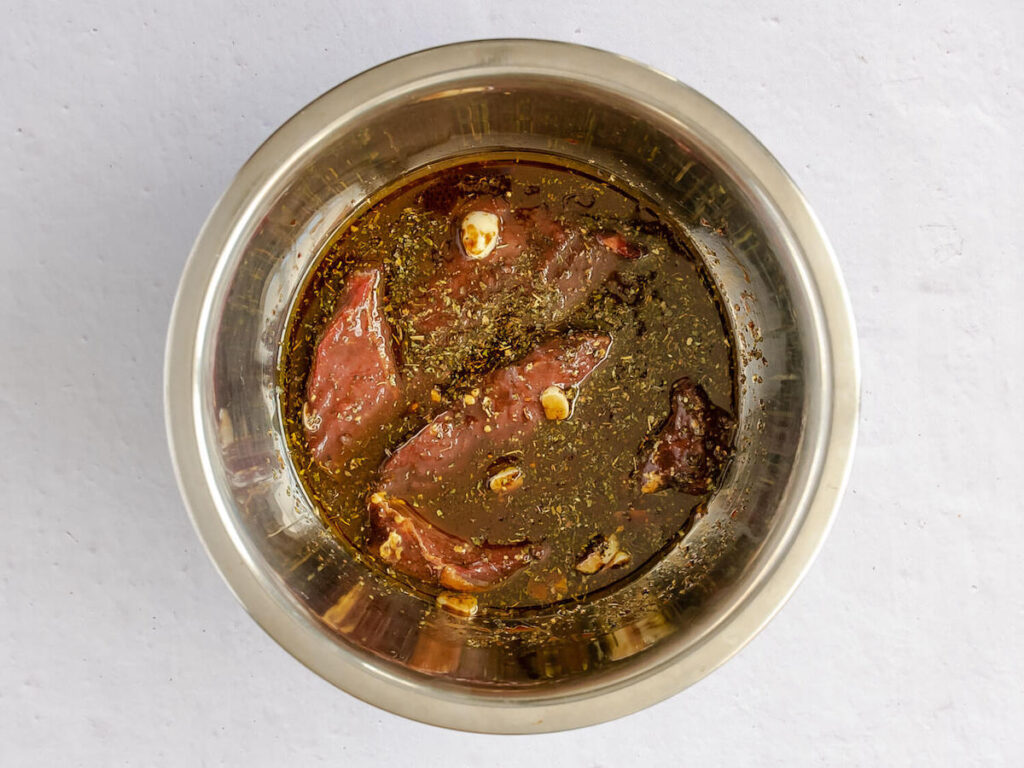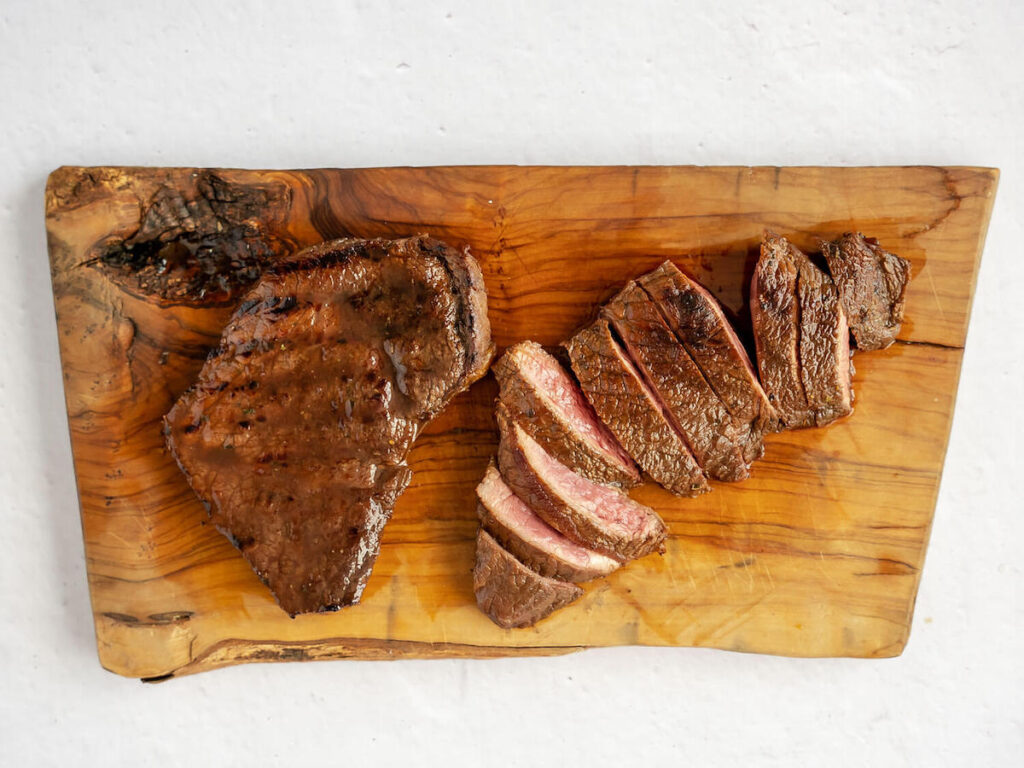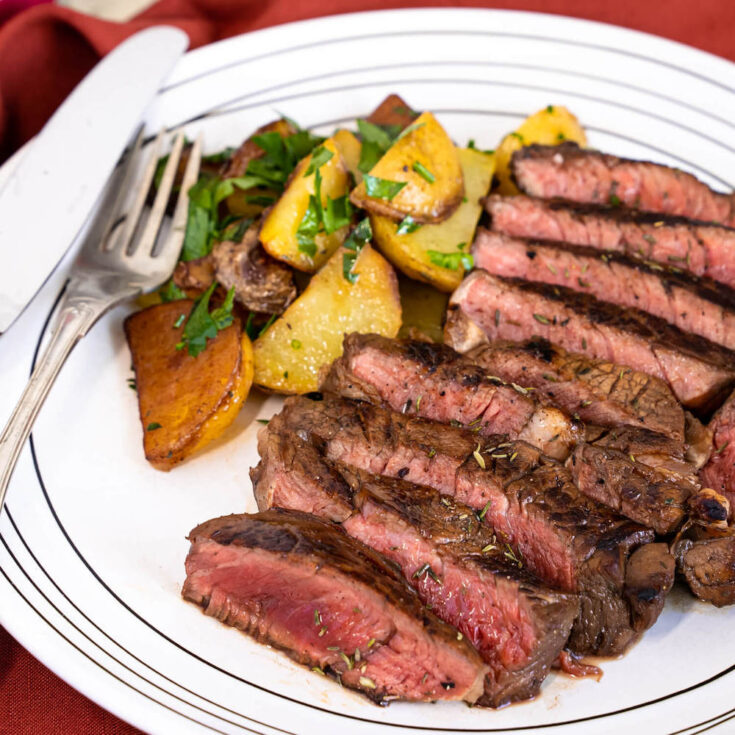This easy steak marinade has the perfect combination of bold flavors to complement and enhance the meat to create the best steak you’ve ever tasted!

Origin of Balsamic Vinegar
The word “balsamic” comes from the Latin word “balsamum,” meaning “healing power.” Balsamic vinegar is a popular ingredient in many dishes, and has been used since the Middle Ages.
Balsamic vinegar was originally made only in Modena, Italy. The process of making balsamic vinegar has remained unchanged for centuries. Balsamic vinegar is made by crushing grapes and aging the juice in wooden barrels. The barrels are made of different types of wood, such as chestnut, cherry, juniper, or oak. This aging process allows the vinegar to develop a complex flavor.
Today, balsamic vinegar is used in many different dishes, both savory and sweet. It can be used as a dressing for salads or grilled vegetables. It can also be used to deglaze a pan after cooking meat or fish. Balsamic vinegar can also be used in desserts, such as fruit salad or ice cream.
If you’re looking for a unique flavor, you may be surprised at how much you enjoy the complex flavor of this vinegar.
For the longest time I thought marinades were for tough, cuts of meat and hid the natural flavor, but that was before I learned about how addressing all the tastes we can sense transforms the meal into a delightful experience.
Ingredients + Variations
1 tablespoon Dijon mustard
½ cup Balsamic vinegar
¼ cup Olive oil
3 Cloves garlic, thinly sliced
1 teaspoon Dried basil
Sea salt and black pepper, to taste
1 lb. Sirloin steak

Alternatives
Feel free to substitute sirloin for your favorite steak!
Sirloin not available? Try strip steaks or skirt steak instead.
No fresh basil? Dried basil will work pretty well with plenty of time to infuse its flavor into the steak while marinading.
No fresh garlic? Try a teaspoon of garlic powder per clove of garlic. (I’ll be honest, as a garlic fan I double the garlic cloves but some people feel that’s way too much.)
Equipment
Gas grill (for best temperature control) or cast iron skillet for indoor cooking
Large shallow dish
Whisk
Tongs
Platter or cutting board
Knife
Instructions
- Combine mustard, balsamic vinegar, olive oil, garlic, and basil in a large shallow dish. Add sea salt and pepper to taste. Whisk to combine.
- Season steak with black pepper and add to the marinade. Turn steak with tongs a few times to ensure steak is evenly coated with the marinade.
- Marinate for at least 30 minutes at room temperature or up to 10 hours in a covered dish or ziplock bag in the refrigerator to give the marinade enough time to permeate the steak on the inside. Longer is better – I prefer to marinade them overnight in the refrigerator.
- Heat an outdoor grill to medium heat or grill-pan on the stovetop top on medium-high.
- Remove steak from marinade allowing excess to drip off, then discard marinade. Lightly season steak with salt and black pepper on the first side. Place steaks on grill over medium-high heat 4-5 minutes. Turn steak, season with salt and black pepper to taste on 2nd side and grill steak for another 3-5 minutes, or until steak reaches desired level of doneness.
- Transfer steak to a platter or cutting board and let rest 10 minutes before slicing.
- Slice steak into thin slices and serve with Grilled Corn On the Cob With Herbed Parmesan Butter or your favorite side dish.
- Enjoy every juicy bite!

Cooking Tips
- Please note that actual cook time will vary depending on a number of factors, including the internal temperature of the steak when you start grilling it, thickness, and the desired final cooking temperature.
- For best results, remove steak from the refrigerator 30 minutes prior to cooking and use an instant read meat thermometer.
- As a general rule of thumb, remove steaks from grill when they are 5-10°F below desired final temperature as they will continue to cook while resting.
Serving
Plating and garnishing
- Preheat plates in a warming over or regular oven from 140°F to 190°F (60°C to 90°C) for about 15 minutes.
- Garnish with a sprig of parsley or fine slices of red onion to add color to the dish.
Pairs with
- Red wine, especially a cabernet savignon.
- Beer, particularly a brown ale.
Goes well with
- New potatoes
- Bell pepper
Storage Instructions
You can save leftover steak in an airtight container in the refrigerator up to three days.
Bragging Rights
We would love to see what you did with this recipe!
Comment below or share your photo @flavorportal / #flavorportal

Grilled Balsamic Marinated Steak
Ingredients
- 1 tablespoon Dijon mustard
- ½ cup Balsamic vinegar
- ¼ cup Olive oil
- 3 Garlic cloves, thinly sliced
- 1 teaspoon Dried basil
- Sea salt and black pepper, to taste
- 1 lb. Sirloin steak
Instructions
- Combine mustard, balsamic vinegar, olive oil, garlic, and basil in a large shallow pan. Add sea salt and pepper to taste. Whisk to combine.
- Season steak with black pepper and add to the marinade. Turn steak with tongs a few times to ensure steak is evenly coated with the marinade.
- Marinate for at least 30 minutes at room temperature or up to 10 hours in the refrigerator.
- Heat an outdoor grill to medium heat or grill-pan on the stovetop top on medium-high.
- Remove steak from marinade allowing excess marinade to drip off. Lightly season steak with salt and black pepper on the first side. Grill steak on medium 4-5 minutes. Turn steak, season with salt and black pepper to taste on 2nd side and cook for another 3-5 minutes, or until steak reaches desired level of doneness.
- Transfer to a platter and let rest 10 minutes before slicing.
- Slice steak and serve with Grilled Corn On the Cob With Herbed Parmesan Butter or your favorite side dish.
- Enjoy!
Notes
Please note that actual cook time will vary depending on a number of factors, including the internal starting temperature of the steak, thickness, and the desired final cooking temperature.
For best results, remove steak from the refrigerator 30 minutes prior to cooking and use an instant read thermometer.
As a general rule of thumb, remove steaks from grill when they are 5-10°F below desired final temperature as they will continue to cook while resting.
